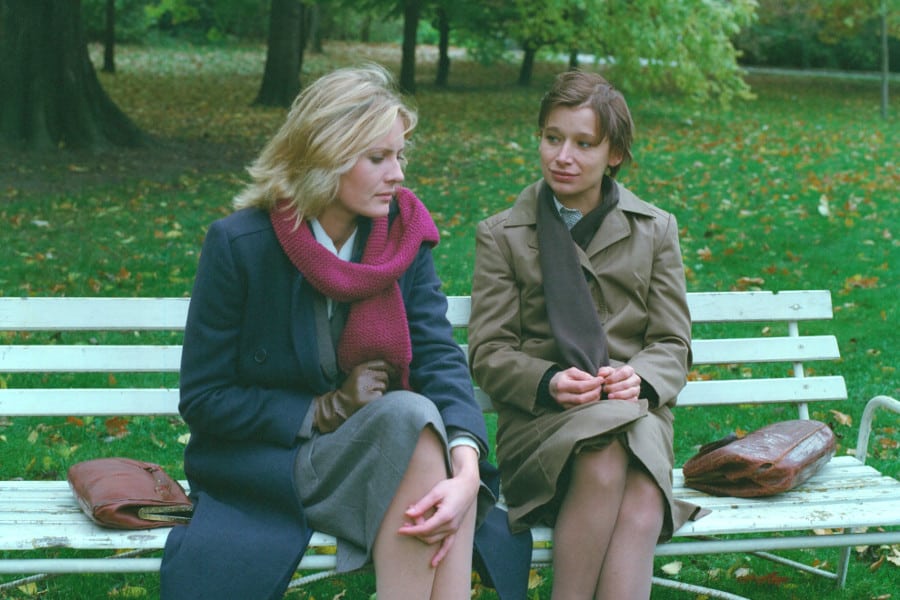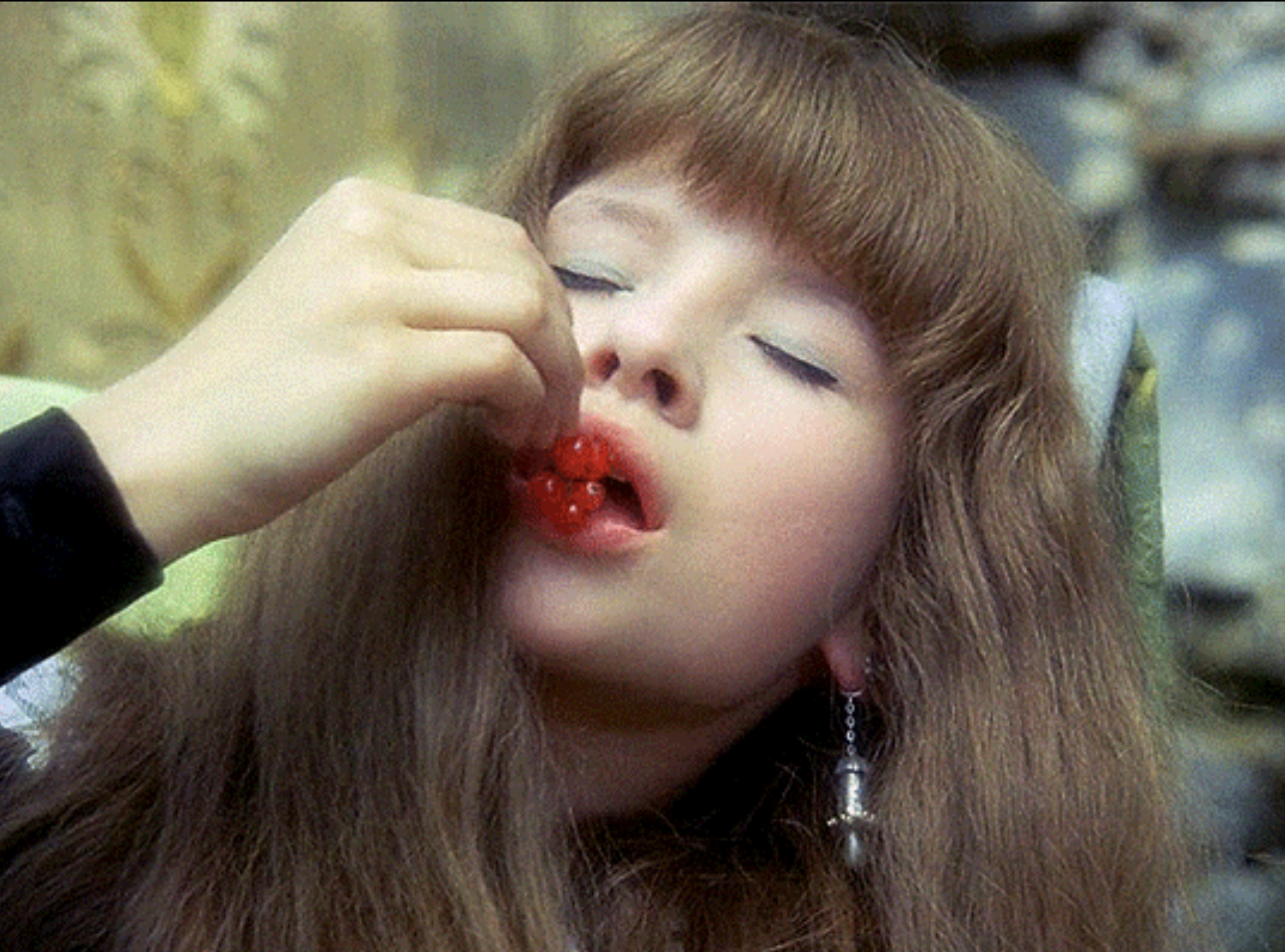For decades, filmmakers have turned to the well-weathered pages of their favourite queer novels in search of inspiration for their next story. More recently, they’ve given us Oscar-nominated gems like Call Me by Your Name, tender adaptations of contemporary classics like Lie With Me and feel good streaming hits like Heartstopper and Red, White and Royal Blue. But as early as the 1930s — times when homosexuality and queerness as a whole were considered taboo — similar stories have been told, albeit often with more coded cinematic language.
From bisexual horror cinema to off-beat black-and-white stories about gay store clerks, these seven vintage queer movies don’t only offer up their own perspectives on LGBTQ+ life, but the opportunity to expand upon them by reading the novels they’re based on.
Olivia (1951)
Released in the US as The Pit of Loneliness, to capitalise on the shock response to another unrelated sapphic novel (The Well of Loneliness), Olivia is actually based on a 1949 semi-autobiographical book of the same name by author Dorothy Bussy. In the film adaptation, the titular character — an English teenage girl — attends finishing school in France. When she arrives, she finds herself at the point of division between the adored headmistress Mademoiselle Julie and her bitter counterpart, Mademoiselle Cara. Soon, Olivia falls for Julie, and the two embark on a love affair under Cara’s watch, as she threatens to tear them apart.
Querelle (1982)
Rainer Werner Fassbinder’s final film, released when he was just 37, was this vibrant and intoxicating story of a sailor who steps off a boat at the port town of Brest in Brittany into a seedy gay underworld, filled with drugs, murder and sex. The film has gone on to become a cult classic, mostly as a totem for those enamoured by the aesthetics of homoeroticism, but it stands out, critics said, as one of the few adaptation of author Jean Genet that captured his surreal and macabre spirit. The film’s source material was released in 1947 as Querelle of Brest. Less than 500 copies were printed, with Jean Cocteau enlisted to illustrate it. Cocteau’s illustrations got the first edition of the novel banned in France, but it has since been released widely in English.
Valerie and Her Week of Wonders (1970)
You’d be forgiven for not being up to speed on queer 70s Czechoslovakian surrealist fantasy horror, mostly because — beyond this entry — there isn’t a great deal of it. A landmark movie of the Czech New Wave, Valerie and Her Week of Wonders is predominantly a coming-of-age film, about the titular character’s voyage of self discovery through a poetic, fable-like landscape. There are scenes of women writhing playfully in water, kissing each other, as Valerie watches on from afar; but there are also encounters with vampires and terrifying creatures. Either way, the tonal construction of this film perfectly captures what it means to learn fully who you are in a world that often plays tricks on you. The book it’s based on by author Vítězslav Nezval, released in 1945 — 10 years after it was written — felt like a final lick of fantasy for its maker, before his work turned to focus on the social realism of the Soviet world at that time.
I Am A Camera (1955)
Before Christopher Isherwood’s semi-autobiographical Goodbye to Berlin became the source material for one of the most iconic musicals of all time — Cabaret — there was a more modest screen adaptation of it. I Am A Camera, released 10 years after Nazi occupation ended in Berlin, follows Chris, a British writer reflecting on the early 1930s, a time at which he lived in the German city. There, he met an exuberant, chance-taking performer named Sally Bowles and fell in love with her despite her unreliable nature. Christopher Isherwood was openly queer during the time he wrote about in the book, but it’s never explicitly mentioned in it. This film adaptation, which was preceded and inspired by a stage show of the same name, frames him as a “confirmed bachelor”.

Another Way (1982)
Set in 50s Budapest, this cult classic by director Károly Makk won its lead star Jadwiga Jankowska-Cieślak the Best Actress prize at Cannes Film Festival. It tells the story of Éva, a journalist living in the Hungarian city whose interest in women is already apparent to the authorities. When she starts a job at a local magazine known as The Truth, she meets a married woman Livia who she has a sexual and romantic affair with. The story is loosely based on the novella Another Love by Erzsébet Galgóczi, who co-wrote the film’s screenplay.
Midnight in the Garden of Good and Evil (1997)
Transgender representation was scant in 20th century cinema — even rarer was representation that felt touching and sensitive — but Midnight in the Garden of Good and Evil helped change that. In 1997, Clint Eastwood directed a film about a murdered gay sex worker and the antiques dealer accused of murdering him. Described as “irrepressible”, The Lady Chablis is one of the film’s characters who appears as a witness to the strangeness of what’s unfolding. But the film was based on truth: specifically, a 1994 non-fiction novel by the writer John Berendt, in which The Lady Chablis appears. She — alongside a handful of other characters in the story — played themselves in the 1997 movie, and she’s since been remembered as one of the few real depictions of American trans life in cinema.
Mala Noche (1986)
Gus Van Sant’s directorial debut, about a gay store clerk, his friends from Mexico and the knotty infatuations he has for them, is an underseen classic; an off-beat masterpiece of meandering moviemaking. But it’s not entirely a work of his own imagination. Instead, Mala Noche is based on a book by writer and poet Walt Curtis, the Portland, Oregon native who, at 82, is still creating work to this day.

